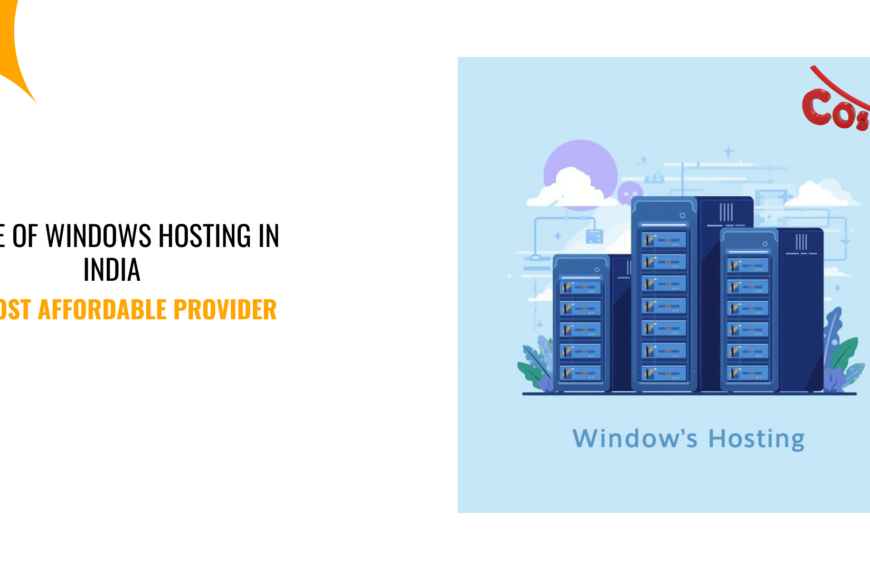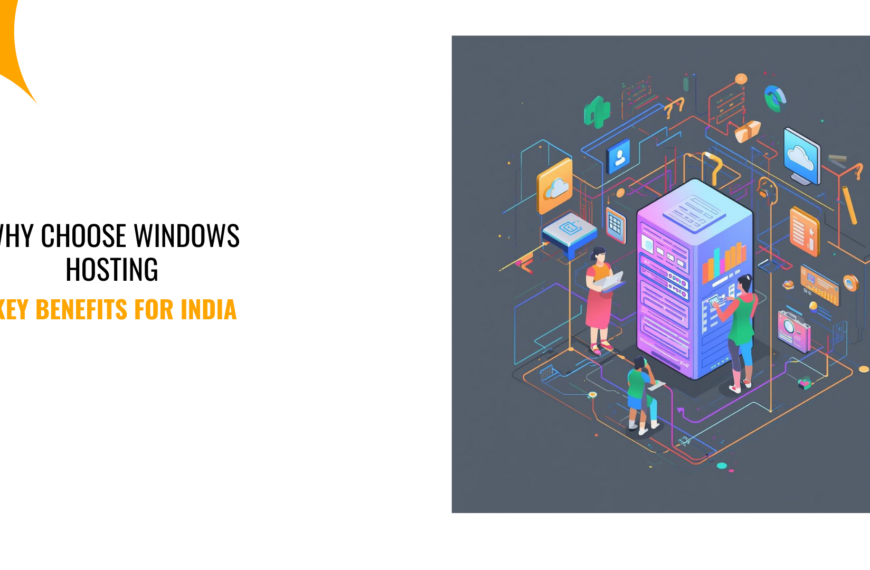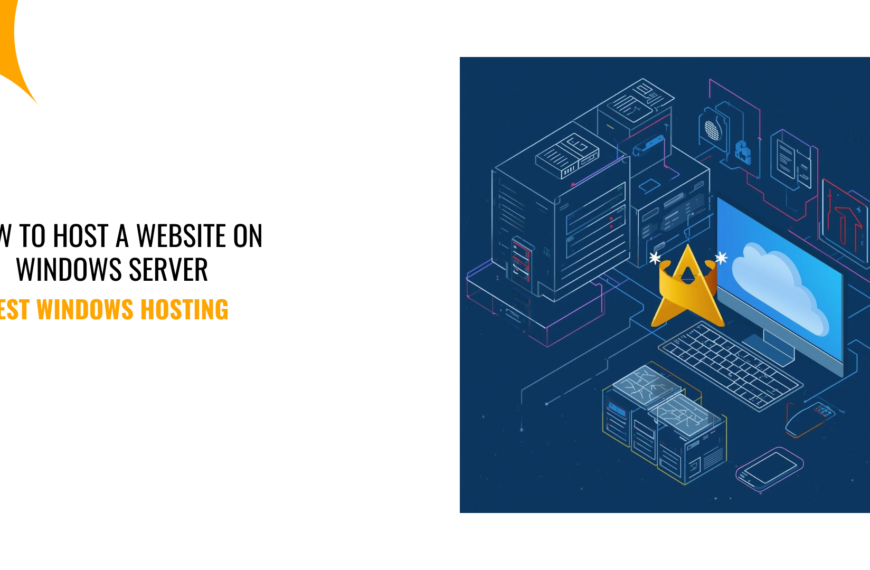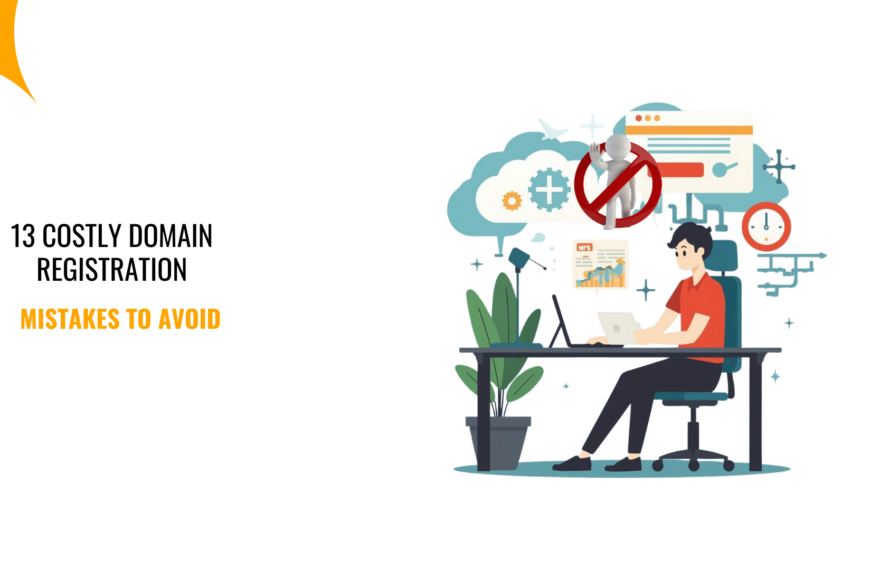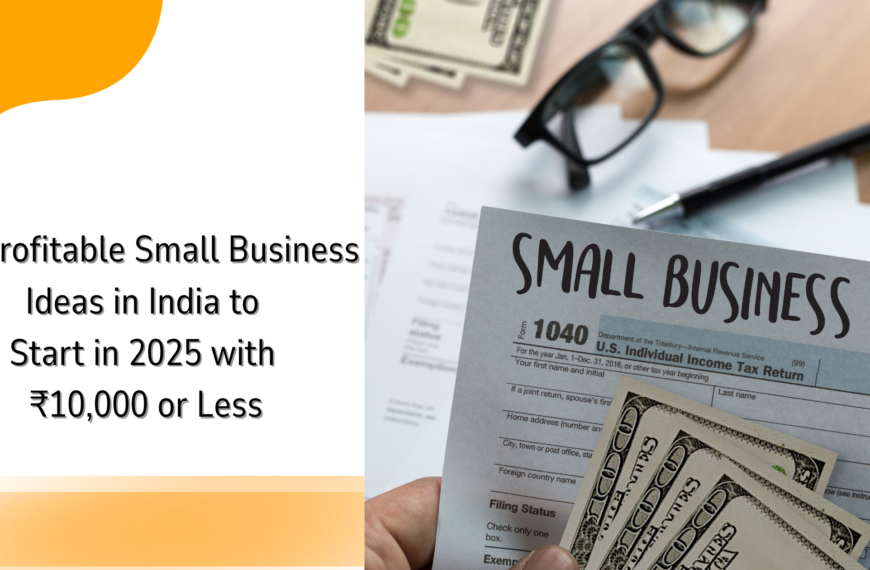Last updated on September 19th, 2024 at 10:31 am
Picture this: You’re scrolling through your favorite social media app, and suddenly, you’re hit with an ingenious idea.
What if you could turn your passion for fashion into a thriving online business?
Well, my friend, you’re not alone.
The Indian e-commerce market is booming, and fashion is leading the charge.
In fact, according to a recent report by Statista, the Indian online fashion market is expected to reach $1.2 trillion by 2027.
That’s a lot of rupees up for grabs!
But here’s the thing: starting an online clothes business in India isn’t just about slapping some products on a website and waiting for the cash to roll in.
It’s about understanding your market, crafting a unique brand, and delivering value that keeps customers coming back for more.
In this guide, I’m going to walk you through exactly how to start an online clothes business in India that stands out from the crowd.
We’ll cover everything from the nitty-gritty legal stuff to the sexy world of digital marketing.
By the end of this post, you’ll have a clear roadmap to turn your fashion dreams into a profitable reality.
Read also: Is Online Clothing Business Profitable in India? The Truth
What You Need to Start an Online Clothes Business in India
Before we jump into the how-to, let’s talk about what you’ll need in your entrepreneurial toolkit to start an online clothes business in India.
Think of this as your business shopping list:
- A rock-solid business plan: This is your roadmap to success. It should outline your vision, target market, financial projections, and marketing strategies.
- Seed capital: You don’t need millions, but you will need some initial investment. This could range from ₹50,000 to ₹5,00,000 depending on your scale.
- A reliable e-commerce platform: Your online storefront is crucial. Popular options include Shopify, WooCommerce, or Magento.
- High-quality product images: In the online world, your photos are your salespeople. Invest in good photography equipment or hire a professional.
- Inventory management system: Keep track of your stock to avoid overselling or stockouts. Many e-commerce platforms have built-in systems for this.
- Payment gateway: To accept online payments, you’ll need a payment gateway like Razorpay, CCAvenue, or PayU.
- Logistics partner: For smooth order fulfillment, partner with reliable courier services like BlueDart, FedEx, or Delhivery.
- Digital marketing tools: SEO tools, social media management platforms, and email marketing software will be your best friends.
- Customer service tools: A CRM system and maybe a chatbot to handle customer queries efficiently.
- Legal essentials: This includes business registration, GST registration, and any necessary licenses.
Now, let’s talk about the legal side of things.
To start an online clothes business in India, you’ll need to:
- Register your business (Sole Proprietorship, Partnership, or Private Limited Company)
- Obtain a GST registration
- Register your trademark (to protect your brand)
- Comply with the Information Technology Act, 2000
Financially, be prepared to invest in:
- Website development and hosting
- Inventory
- Marketing and advertising
- Operational costs (packaging, shipping, etc.)
Remember, starting lean is okay.
You don’t need to have everything perfect from day one.
The key is to start, learn, and grow.
Step-by-Step Guide to Starting Your Online Clothes Business in India
1. Market Research and Niche Selection
The first step to start an online clothes business in India is to know your market inside and out.
Here’s how to do it:
- Identify your target audience: Who are you selling to? Millennials? Working professionals? Fashion-forward teens?
- Analyze your competition: Who’s already selling online? What are they doing well? Where are the gaps?
- Find your niche: Maybe it’s sustainable fashion, plus-size clothing, or Indo-western fusion wear.
- Understand trends: Use tools like Google Trends to see what’s hot in Indian fashion.
- Conduct surveys: Get direct feedback from potential customers about their preferences and pain points.
Remember, the goal isn’t to be everything to everyone.
It’s to be the perfect solution for a specific group of people.
As the saying goes, “The riches are in the niches.”
2. Creating a Business Plan
Now that you’ve done your research, it’s time to put it all together in a business plan.
This isn’t just a formality – it’s your blueprint for success.
Here’s what your business plan should include:
- Executive Summary: A brief overview of your business idea
- Company Description: Your vision, mission, and unique selling proposition
- Market Analysis: Insights from your research
- Organization and Management: Your team structure
- Products and Services: Detailed description of what you’re selling
- Marketing and Sales Strategy: How you’ll attract and retain customers
- Financial Projections: Expected costs, revenue, and profitability
Pro tip: Use tools like LivePlan or Enloop to create a professional business plan quickly.
3. Sourcing Your Products
This is where the rubber meets the road.
To start an online clothes business in India, you need products to sell.
You have a few options:
- Manufacture your own designs: This gives you complete control but requires more capital and expertise.
- Work with local manufacturers: This supports the Indian economy and gives you more flexibility.
- Dropshipping: You sell products without holding inventory. The supplier ships directly to your customer.
- Wholesale: Buy in bulk from wholesalers and resell at a markup.
When choosing suppliers, consider:
- Quality of products
- Pricing and minimum order quantities
- Reliability and communication
- Ethical practices
Remember, your products are the heart of your business.
Don’t compromise on quality to save a few rupees.
4. Setting Up Your Online Store
Now it’s time to build your digital storefront.
Here’s how to set up your online store:
- Choose your e-commerce platform: Popular options in India include Shopify, WooCommerce, and Magento.
- Select a domain name: Make it catchy, relevant, and easy to remember.
- Design your website: Keep it clean, user-friendly, and mobile-responsive.
- Set up payment gateways: Integrate popular options like Razorpay, PayU, and CCAvenue.
- Implement security measures: SSL certificates are a must to protect customer data.
- Optimize for search engines: Use relevant keywords, meta descriptions, and alt tags.
- Create compelling product descriptions: Highlight benefits, not just features.
- Add high-quality product images: Show your clothes from multiple angles.
Pro tip: If you’re not tech-savvy, consider hiring a professional web developer.
The investment will pay off in a smoother, more professional-looking site.
5. Developing Your Brand Identity
Your brand is more than just a logo.
It’s the personality of your business.
To develop a strong brand identity:
- Define your brand values: What does your business stand for?
- Create a unique logo: Use tools like Canva or hire a graphic designer.
- Choose your color palette: Colors evoke emotions. Choose wisely.
- Develop a brand voice: How will you communicate with customers?
- Design packaging: Make unboxing an experience customers will want to share.
Remember, consistency is key in branding.
Use the same visual elements and tone across all your platforms.
6. Implementing a Marketing Strategy
You’ve got a great product and a slick website.
Now it’s time to get the word out.
Here’s how to market your online clothes business in India:
- Leverage social media: Instagram and Facebook are goldmines for fashion businesses.
- Implement SEO: Optimize your site to rank for relevant keywords.
- Run targeted ads: Use platforms like Google Ads and Facebook Ads to reach your ideal customers.
- Collaborate with influencers: Partner with fashion influencers to showcase your products.
- Email marketing: Build a subscriber list and nurture leads with regular newsletters.
- Content marketing: Start a blog or YouTube channel with fashion tips and trends.
- Offer promotions: Use discounts and sales strategically to attract new customers.
Pro tip: Don’t spread yourself too thin.
Focus on mastering one or two marketing channels before expanding.
7. Managing Inventory and Fulfillment
Efficient inventory management is crucial for your online clothes business.
Here’s how to stay on top of it:
- Use inventory management software: This helps track stock levels and reorder points.
- Implement a barcode system: This reduces errors and speeds up order processing.
- Forecast demand: Use historical data and market trends to predict future sales.
- Partner with reliable logistics providers: Choose courier services known for timely delivery.
- Offer multiple shipping options: Give customers choices in delivery speed and cost.
- Have a clear returns policy: Make the return process smooth for customer satisfaction.
Remember, in e-commerce, fast and accurate fulfillment is key to customer happiness.
8. Providing Customer Service
Outstanding customer service can set you apart in the crowded online fashion space.
Here’s how to wow your customers:
- Offer multiple support channels: Email, phone, chat, and social media.
- Respond quickly: Aim to reply to queries within 24 hours.
- Create a comprehensive FAQ section: Address common questions proactively.
- Personalize interactions: Use customer names and purchase history in communications.
- Go above and beyond: Surprise customers with unexpected perks or personalized notes.
- Ask for feedback: Use surveys to continuously improve your service.
Pro tip: Consider using a CRM system to manage customer interactions efficiently.
Tips for Success in the Indian Online Clothing Market
Now that we’ve covered the basics of how to start an online clothes business in India, let’s dive into some tips that can take your venture from good to great:
- Focus on mobile optimization: With over 700 million smartphone users in India, your website must be mobile-friendly.
- Leverage the power of user-generated content: Encourage customers to share photos wearing your clothes. It’s authentic marketing gold.
- Offer size guides and detailed measurements: This reduces returns and increases customer satisfaction.
- Implement a loyalty program: Reward repeat customers to encourage brand loyalty.
- Stay on top of fashion trends: The Indian fashion scene moves fast. Stay ahead of the curve.
- Consider regional preferences: India is diverse. What works in Mumbai might not work in Chennai.
- Provide multiple language options: Consider offering your website in Hindi and other regional languages.
- Leverage festivals and cultural events: Plan special collections and promotions around Diwali, Eid, and other festivals.
- Focus on sustainability: More Indian consumers are becoming eco-conscious. If possible, incorporate sustainable practices in your business.
- Offer easy payment options: Include options like Cash on Delivery, which is still popular in India.
Remember, success in the online clothing business isn’t just about selling clothes.
It’s about creating an experience that keeps customers coming back for more.
Common Mistakes to Avoid When Starting an Online Clothes Business in India
Even the most successful entrepreneurs make mistakes.
But you can learn from their experiences.
Here are some common pitfalls to avoid when you start an online clothes business in India:
- Neglecting mobile users: As mentioned earlier, mobile is king in India. Ignore it at your peril.
- Underestimating the power of customer service: In the age of social media, one bad review can snowball quickly.
- Overstocking inventory: Start lean and scale as you grow. Don’t tie up all your capital in stock.
- Ignoring data and analytics: Let data guide your decisions, not just gut feelings.
- Trying to compete solely on price: There’s always someone who can go cheaper. Compete on value instead.
- Neglecting SEO: Don’t rely solely on paid ads. Organic traffic is valuable and sustainable.
- Poor product photography: In online fashion, the image is everything. Invest in good photos.
- Inconsistent branding: Your brand should be recognizable across all platforms and touchpoints.
- Ignoring legal requirements: Make sure you’re compliant with all e-commerce laws and regulations in India.
- Failing to plan for scale: Think big from the start. Choose systems and processes that can grow with you.
You will be setting yourself up for long-term success in the Indian online fashion market by avoiding these mistakes,
Troubleshooting Your Online Clothes Business
Even with the best planning, you’re bound to encounter some bumps along the road.
Here’s how to troubleshoot common issues when you start an online clothes business in India:
Slow sales:
- Reassess your marketing strategy
- Analyze your website traffic and conversion rates
- Consider adjusting your pricing or offering promotions
- Improve your product descriptions and images
High return rates:
- Review your size charts and product descriptions for accuracy
- Analyze return reasons and address common issues
- Consider implementing virtual try-on technology
- Improve your packaging to reduce damage during shipping
Negative reviews:
- Respond promptly and professionally to all negative feedback
- Address the issue and offer a solution
- Use feedback to improve your products and services
- Encourage satisfied customers to leave positive reviews
Inventory management issues:
- Implement or upgrade your inventory management system
- Use data to improve your demand forecasting
- Consider implementing a just-in-time inventory system
- Partner with reliable suppliers who can deliver quickly
Website performance problems:
- Optimize your images and remove unnecessary plugins
- Choose a reliable hosting provider
- Implement caching to improve load times
- Regularly update your e-commerce platform and plugins
Remember, every problem is an opportunity to improve your business.
Stay flexible, keep learning, and don’t be afraid to pivot when necessary.
Variations and Alternatives in the Indian Online Clothing Market
The beauty of e-commerce is its flexibility.
There’s more than one way to start an online clothes business in India.
Let’s explore some alternatives:
Dropshipping vs. Holding Inventory
Dropshipping:
- Pros: Lower upfront costs, less risk, easier to start
- Cons: Lower profit margins, less control over quality and shipping
Holding Inventory:
- Pros: Higher profit margins, more control over quality and shipping
- Cons: Higher upfront costs, risk of unsold inventory
When to choose: Dropshipping is great for testing the market or if you’re on a tight budget. Holding inventory is better if you want more control and higher profits.
Marketplaces vs. Standalone E-commerce Sites
Marketplaces (like Amazon, Flipkart):
- Pros: Built-in traffic, established trust, easier to start
- Cons: High competition, less control over branding, lower margins
Standalone E-commerce Sites:
- Pros: Full control over branding and customer experience, higher margins
- Cons: More challenging to attract traffic, requires more marketing effort
When to choose: Marketplaces are great for beginners or as an additional sales channel. Standalone sites are better for building a unique brand and long-term growth.
Niche Specialization vs. Broad Appeal
Niche Specialization:
- Pros: Less competition, more loyal customers, easier to become an authority
- Cons: Smaller potential market, risk of niche becoming obsolete
Broad Appeal:
- Pros: Larger potential market, more opportunities for cross-selling
- Cons: More competition, harder to stand out
When to choose: Niche specialization is great if you have a unique product or expertise. Broad appeal works well if you can compete effectively in multiple categories.
Remember, these aren’t mutually exclusive.
Many successful businesses use a combination of these approaches.
For example, you might start with dropshipping on marketplaces to test the waters, then gradually move to holding inventory and running your own site as you grow.
The key is to choose the approach that aligns best with your goals, resources, and target market.

₹25 PER MONTH
HOSTING
Conclusion
Congratulations!
You’ve just received a crash course on how to start an online clothes business in India.
From market research to troubleshooting, we’ve covered a lot of ground.
Let’s recap the key points:
- Start with thorough market research and find your niche
- Create a solid business plan
- Choose the right sourcing strategy for your products
- Set up a user-friendly online store
- Develop a strong brand identity
- Implement a multi-channel marketing strategy
- Manage your inventory and fulfillment efficiently
- Provide outstanding customer service
- Stay flexible and be ready to troubleshoot issues as they arise
- Consider different business models and be open to pivoting if needed
Remember, starting an online clothes business in India isn’t just about selling clothes.
It’s about creating an experience, building relationships, and solving problems for your customers.
The Indian e-commerce market is booming, and there’s plenty of room for innovative, customer-focused businesses to thrive.
Yes, there will be challenges.
Yes, there will be days when you question why you started this journey.
But with persistence, creativity, and a willingness to learn and adapt, you can build a successful online clothing business that not only makes money but also makes a difference in people’s lives.
So, what are you waiting for?
Take that first step today.
Do your research, start planning, and get ready to make your mark in the exciting world of Indian online fashion.
The future of fashion is digital, and it’s waiting for entrepreneurs like you to shape it.
Read also:
- How to Start Online Book Selling Business in India
- How to Start a Successful Online Business in India
- 11 Profitable Online Businesses in India (Zero Initial Investment)
- #7 Best Online Franchise Businesses in India
FAQs
Q1: How much capital do I need to start an online clothes business in India?
A: The initial investment can vary widely, but you can start with as little as ₹50,000 to ₹5,00,000 depending on your business model and scale. Dropshipping requires less upfront capital compared to holding inventory.
Q2: Do I need any special licenses to start an online clothes business in India?
A: At a minimum, you’ll need to register your business, obtain a GST registration, and comply with the Information Technology Act, 2000. Depending on your location and business model, you might need additional local licenses.
Q3: How long does it take to set up an online clothes business in India?
A: The timeline can vary, but typically it takes 2-3 months from planning to launch. This includes time for market research, website development, sourcing products, and setting up operations.
Q4: What’s the best e-commerce platform for selling clothes online in India?
A: Popular choices include Shopify, WooCommerce, and Magento. The best platform depends on your specific needs, technical skills, and budget. Shopify is often recommended for beginners due to its ease of use.
Q5: How can I compete with established online fashion retailers in India?
A: Focus on providing unique value. This could be through niche products, exceptional customer service, personalized shopping experiences, or solving specific problems for your target audience. Building a strong brand and community around your business can also help you stand out.
Q6: What are the most effective marketing channels for an online clothes business in India?
A: Social media platforms like Instagram and Facebook are highly effective for fashion businesses. Additionally, influencer marketing, SEO, content marketing, and email marketing can be powerful tools. The key is to understand where your target audience spends their time online.
Q7: How do I handle returns and exchanges for an online clothes business?
A: Have a clear, customer-friendly return policy. Consider offering free returns to build trust. Implement a streamlined process for handling returns, and use the feedback to improve your products and reduce future returns.
Q8: Is it better to manufacture my own clothes or source from suppliers?
A: This depends on your skills, resources, and business model. Manufacturing gives you more control over quality and uniqueness but requires more capital and expertise. Sourcing from suppliers is often easier to start with and allows for more flexibility.
Q9: How important is mobile optimization for an online clothes business in India?
A: It’s crucial. With over 700 million smartphone users in India, a significant portion of your traffic and sales will likely come from mobile devices. Ensure your website is fully responsive and provides a seamless mobile shopping experience.
Q10: What are some common challenges faced by online clothes businesses in India, and how can I overcome them?
A: Common challenges include intense competition, logistics issues, and building trust with customers. Overcome these by focusing on a niche market, partnering with reliable logistics providers, and prioritizing customer satisfaction and transparent business practices.
 cPanel HostingManage your website with cPanel, the most user-friendly hosting control.
cPanel HostingManage your website with cPanel, the most user-friendly hosting control. Domains SearchFrom .com to unique country domains, explore and register extensions worldwide.
Domains SearchFrom .com to unique country domains, explore and register extensions worldwide. Email HostingSimple, secure email hosting that helps you stay connected and professional.
Email HostingSimple, secure email hosting that helps you stay connected and professional. Reseller HostingStart your own hosting business with easy and reliable reseller hosting plans.
Reseller HostingStart your own hosting business with easy and reliable reseller hosting plans. AffiliateJoin our affiliate program and earn commissions every time you bring in new customers.
AffiliateJoin our affiliate program and earn commissions every time you bring in new customers. IN Domain PricesDon’t miss out on the best domain deals in India!
IN Domain PricesDon’t miss out on the best domain deals in India! WHOIS LookupFind out who owns a domain name with a quick and easy WHOIS search.
WHOIS LookupFind out who owns a domain name with a quick and easy WHOIS search. Domain TransferTransfer your domain to us and enjoy reliable support every step of the way.
Domain TransferTransfer your domain to us and enjoy reliable support every step of the way.
